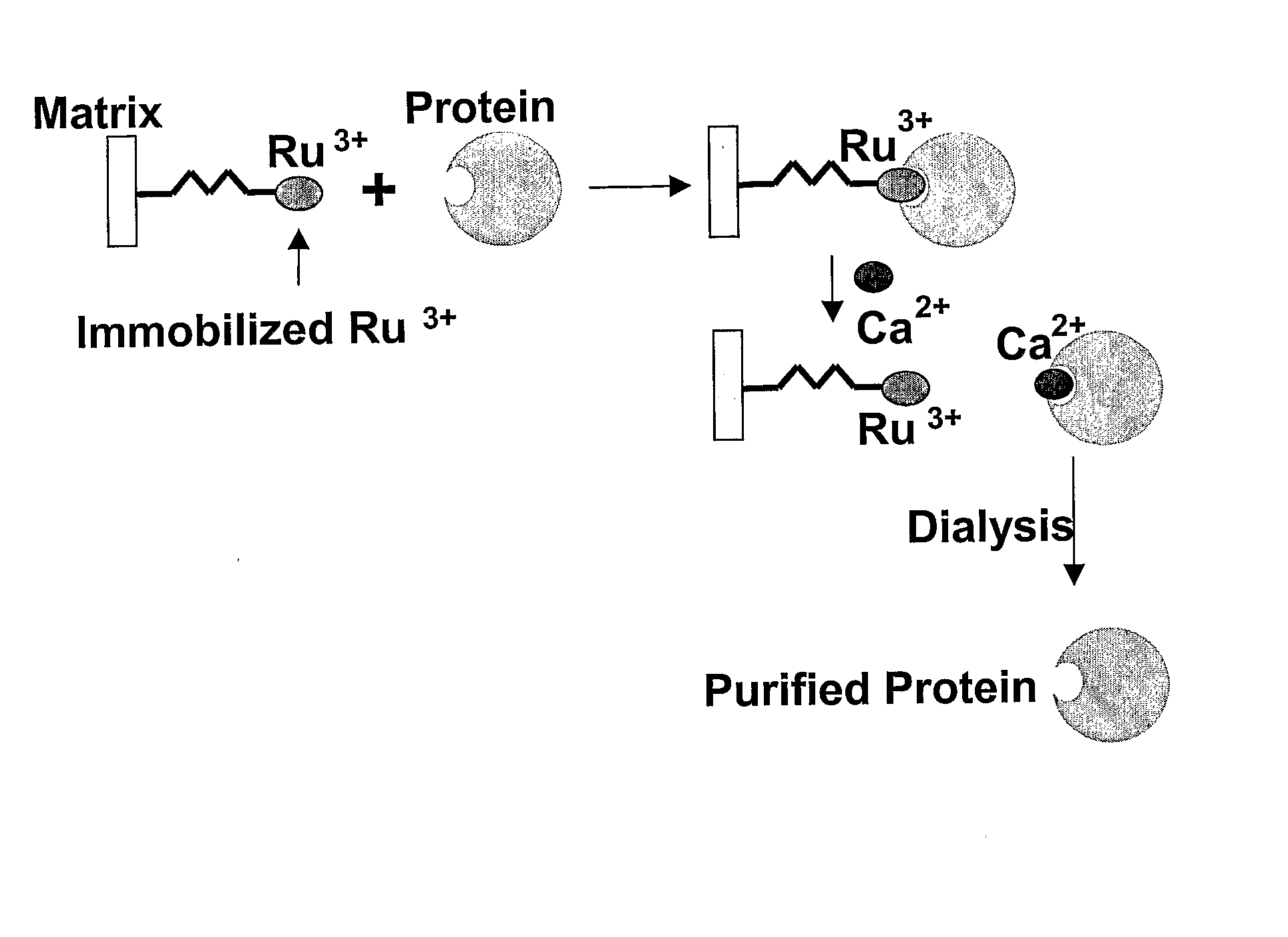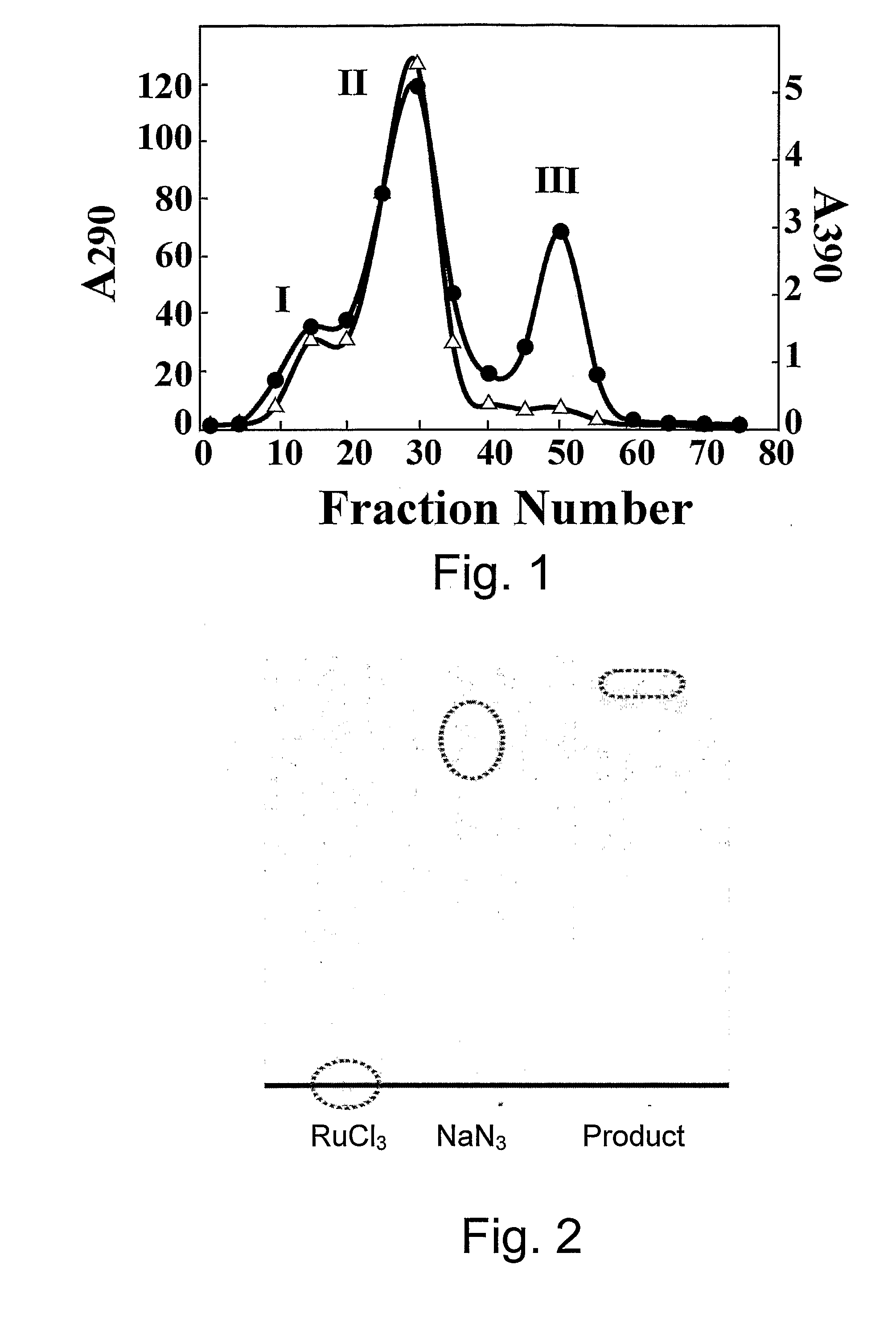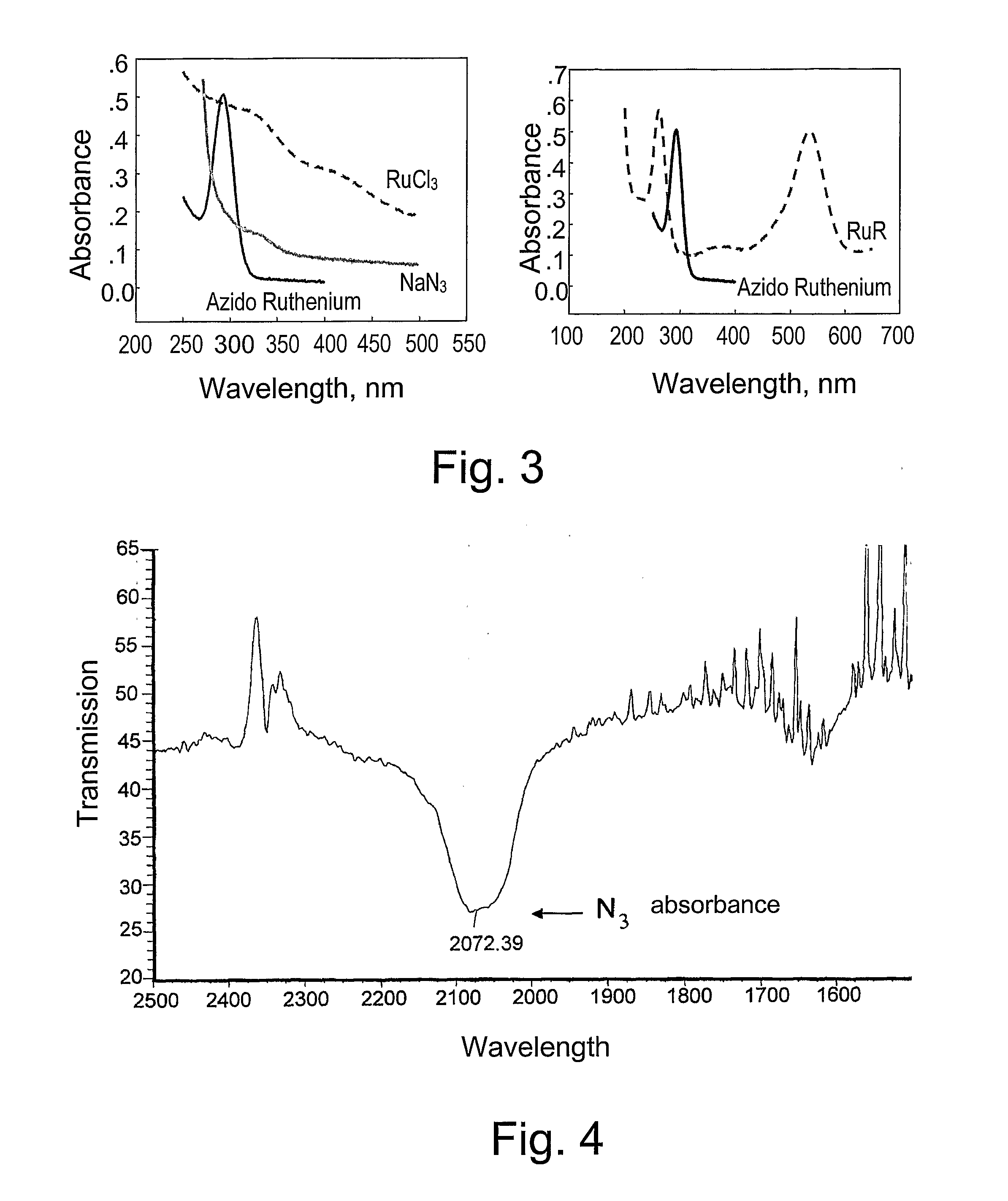Photoreactive Compound Specifically Binding to Calcium Binding Proteins
- Summary
- Abstract
- Description
- Claims
- Application Information
AI Technical Summary
Benefits of technology
Problems solved by technology
Method used
Image
Examples
example 1
Azido-Ruthenium (AzRu) Synthesis
[0046] All steps were carried out in the dark. RuCl3 (29.8 mg, 0.144 mmol) and NaN3 (6.24 mg, 0.096 mmol) were dissolved in 1N HCl (2 ml), silted and incubated at 100° C. for 3 hrs. The sample was then applied to a Sephadex LH-20 column (1.5 cm×44 cm) pre-equilibrated with water (FIG. 1). Free Ru3+, but not the product, remained bound to the column matrix. The absorbance at 290 was measured and the peak was collected, lyophilized and analyzed by TLC on cellulose F plates using 0.16 M ammonium formate, pH 8.5 and 20% methanol as a developer. The product migrated as a single spot with Rf=0.9 (FIG. 2). The product is soluble in water, DMF and DMSO, less soluble in methanol, and insoluble in ethanol, ether, chloroform, ethyl acetate, n-butanol, and isopropyl alcohol. The purified product of azido-ruthenium has a maximal absorbance at 290 nm, the absorbance of a solution of 1.0 M being about 15,000. The spectrum of the product is different from that of th...
example 2
Purification and Characterization of AzRu
[0047] AzRu was prepared as in Example 1, the product eluting as the second peak (FIG. 1), having the absorption maximum at 290 nm, was dried. The elemental analysis of the compound was carried out by SGS Cervac Wolff (France) and the composition was determined in the Department of Chemistry of Ben Gurion University, Israel, to provide the empiric formula of the product: Ru2N3Cl5.5H2O(H2O, HCl).
example 3
Inhibition of Ca2+-Pump Activity
[0048] The effect of azido-ruthenium on Ca2+-dependent proteins and its photoactivation was demonstrated by the inhibition of the Ca2+-pump activity involved in muscle relaxation as shown in FIG. 6. The preparation of SR membranes from skeletal muscle, and the measurement of Ca2+-accumulation were carried out as described above. The sensitivity of the Ca2+-pump activity to azido-ruthenium was increased more than two-fold by photoactivation, demonstrating that azido-ruthenium of this invention is a photoreactive compound. FIG. 6 shows that the inhibition is dependent on time of UV irradiation, as well as on the concentration of the reagent. UV irradiation increases the inhibitory effect of the compound on Ca2+-accumulation by SR membranes, confirming the photoactivation, and suggesting irreversible binding of the reagent to the protein.
PUM
| Property | Measurement | Unit |
|---|---|---|
| Temperature | aaaaa | aaaaa |
| Fraction | aaaaa | aaaaa |
| Fraction | aaaaa | aaaaa |
Abstract
Description
Claims
Application Information
 Login to View More
Login to View More - R&D
- Intellectual Property
- Life Sciences
- Materials
- Tech Scout
- Unparalleled Data Quality
- Higher Quality Content
- 60% Fewer Hallucinations
Browse by: Latest US Patents, China's latest patents, Technical Efficacy Thesaurus, Application Domain, Technology Topic, Popular Technical Reports.
© 2025 PatSnap. All rights reserved.Legal|Privacy policy|Modern Slavery Act Transparency Statement|Sitemap|About US| Contact US: help@patsnap.com



